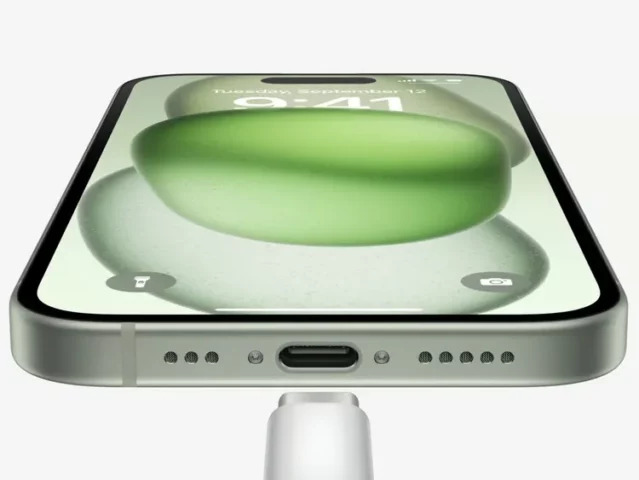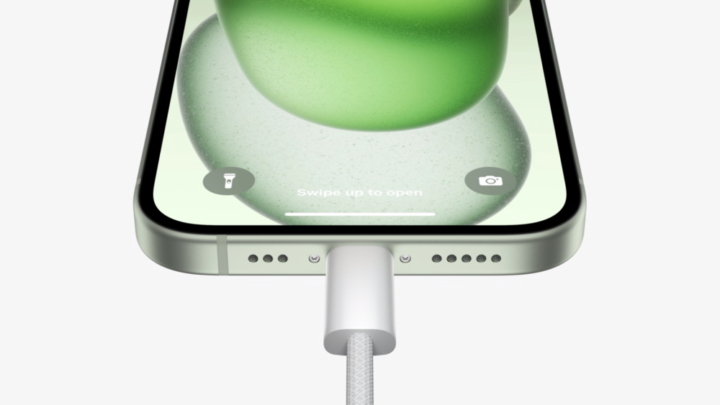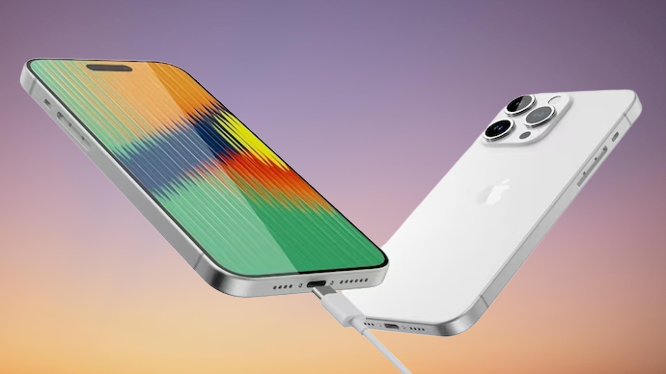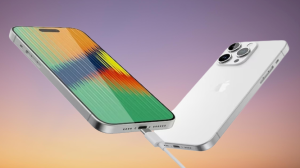Until now, iPhones have been designed with a Lightning USB for all their 35 models. However, with the introduction of the iPhone 15 in 2023, Apple switched to USB-C. Greg Joswiak, an Apple executive and Senior Vice President of Worldwide Marketing, confirmed and announced the inclusion of a Type-C port in the upcoming iPhone 15 lineup. This announcement has surprised many users as Apple has remained loyal to its proprietary Lightning cable for several decades. Nevertheless, the company has now decided to change the charging port. The phone will feature an MFi-certified USB Type-C port with faster USB 3.2 data transfer speed and Thunderbolt support. Apple’s iPhone 15 now embraces USB-C, complying with EU Regulations; explore the New Charging Pin for 2023 instead of lighting cable!
Following the European Union’s implementation of a new law, the Pixel 3 and Pixel 3 XL became the first smartphones from Google to feature a USB-C port. We will delve further into the numerous noteworthy advantages of utilizing Type-C. Moreover, according to reports, USB-C is ready to gain broader adoption, possibly prompting more companies to transition. Ultimately, Apple hesitated when confronted with the EU law, which 602 members supported in favor of USB-C. As a result, the universal acceptance of the ubiquitous USB Type-C connector has been established. The most prevalent question in users’ minds is: Will the Lightning port become obsolete? However, previous reports have also indicated that Apple may impose limitations on the charging and data transfer speeds of USB-C cables, potentially presenting a significant drawback for the upcoming iPhone 15.
What Will You See Here?
Did History Repeat?

In 2012, the European Union (EU) introduced the Micro-USB standardization law to promote uniformity in charging for mobile devices, including Apple and other mobile phones. This directive aimed to reduce electronic waste, enhance consumer convenience, and minimize the need for multiple chargers. The law required manufacturers to adopt the Micro-USB connector as a standard charging interface for mobile phones, ensuring compatibility across various devices. While Apple initially resisted due to its proprietary Lightning connector, they eventually complied by offering Micro-USB adapters for their devices. This move streamlined charging practices, reduced environmental impact, and facilitated the use of a single charger for a wide range of mobile phones, benefiting consumers and the environment.
In 2024, smartphones, tablets, and other portable electronic devices sold in the bloc must have a USB-C port by 2024. The law applies to laptops, but they will have until 2026 to comply. The motive of the EU is to save consumers €2.4 billion ($2.6 billion) per year by reducing the need to buy new chargers. It will also reduce electronic waste, estimated to be 11,000 tons annually in the EU. Apple has agreed to swap to a standard charging port for the betterment of the user. Type-C charging port is seen in the upcoming iPhone 15.

Advantages of Type-C Cable

The Type-C cable offers several advantages over its predecessors. Its reversible design eliminates the frustration of incorrect insertion. Its compact size allows for compatibility with various devices, from laptops to smartphones. The Type-C’s faster data transfer speeds, often with USB 3.1 or Thunderbolt 3 technology, enable quicker file sharing and seamless multimedia streaming.
Its higher power delivery capacity also supports faster device charging and can even power larger devices like laptops. The versatility of Type-C extends to its ability to transmit audio and video signals, reducing the need for multiple cables. This single cable solution simplifies the user experience and promotes standardization across devices. Overall, the Type-C cable’s blend of convenience, speed, power delivery, and versatility makes it a significant advancement in connectivity technology.
Disadvantages of Type-C
While USB Type-C has brought significant advancements in connectivity with its reversible design and ability to transmit power and data, it also has some disadvantages. Firstly, compatibility issues arise as older devices often lack Type-C ports, necessitating adapters or new cables. This transition can be costly and inconvenient. Additionally, the uniform appearance of Type-C cables can lead to confusion, as not all lines support the same capabilities, such as high-speed data transfer or power delivery.
Furthermore, the smaller size of Type-C connectors can make them more susceptible to physical damage or wear and tear over time. Lastly, while Type-C is intended to standardize connections, there’s still a lack of universal adoption across all devices. This leads to a fragmented landscape where users might still require multiple cable types for different devices.
Why Has Apple Switched to USB-C?

The first and foremost reason for Apple is to comply with the rules of the EU, like other mobile manufacturers. Apart from this, there are many benefits of using a Type-C cable. This law reduces the wastage of gadgets to a large extent.
When Did the European Union Pass This Law?
This law was passed on Tuesday, October 4th, by the European Parliament to create a single charging solution for all mobile phones, tablets, and other portable electronics. There were 602 votes in favor, eight abstentions, and 13 against. All the devices will now support fast charging and have the same speed. This is a highly compatible solution for everyone.
Conclusion
In a surprising shift, Apple has made a decisive move by transitioning from its proprietary Lightning USB to the universal USB-C for its iPhone 15 lineup. This transformation comes after the European Union (EU) passed a law to standardize charging ports across electronic devices to reduce waste and enhance user convenience. Despite initial resistance, Apple’s compliance reflects its commitment to environmental sustainability and user satisfaction. However, Apple doesn’t have any other choice. This transition underscores the industry’s response to evolving regulations and the pursuit of seamless consumer technological experiences.
Read More:
- USB-C adapters you can get for your MacBook Pro!
- Transfer your money anywhere and anytime using Western Union!
- What advantages come with Pixel Pass?
- iOS Settings-Formatting text, Controlling key sounds, Picture-in-Picture, Siri and more!
















